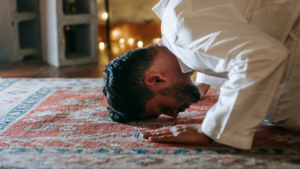Taraweeh Prayers in Ramadan: A Guide Based on Sunnah and Authentic Hadiths
Taraweeh prayers are special night prayers observed during the holy month of Ramadan. These optional (nafl) prayers offer Muslims an opportunity to intensify their worship, devotion, and connection with Allah (SWT). This guide explores the concept of Taraweeh prayers, their significance in Ramadan, and the number of rak’ats (units of prayer) based on Sunnah and authentic hadiths.
Meaning and Significance of Taraweeh:
The word “Taraweeh” comes from the Arabic verb “rawaha,” which means “to rest or find comfort.” While the exact origin of the term is debated, it’s believed to describe the breaks taken between each set of rak’ats during the prayer.
Taraweeh prayers hold significant importance during Ramadan. They provide Muslims with a beautiful opportunity to:
- Increase Night Prayers: Ramadan is a time for heightened spiritual focus. Taraweeh prayers allow Muslims to dedicate additional time to prayer beyond the obligatory five daily prayers.
- Recite the Entire Quran: The tradition is to recite the entire Quran throughout Ramadan during Taraweeh prayers. This allows for deeper reflection on the Quranic message.
- Seek Forgiveness and Mercy: Ramadan is a time for seeking forgiveness and Allah’s (SWT) mercy. The extended prayers allow for more supplication and contemplation.
- Build Community: Taraweeh prayers are often performed in congregation at mosques, fostering a sense of community and shared devotion among Muslims.
Number of Rak’ats in Taraweeh Prayers:
There is no single, definitive narration in the hadiths regarding the exact number of rak’ats for Taraweeh prayers. However, several authentic hadiths provide guidance on how the Prophet Muhammad (PBUH) and his companions observed Taraweeh:
-
Aisha (RA) narration: One of the most frequently cited hadiths comes from Aisha (RA), the wife of the Prophet (PBUH). She reported: “The Messenger of Allah (PBUH) did not pray more than eleven rak’ats, neither in Ramadan nor at any other time.” (Sahih al-Bukhari)
This hadith sets an upper limit of eleven rak’ats but doesn’t explicitly mention eight.
-
Ibn Umar (RA) narration: Another narration from Ibn Umar (RA) states: “The Prophet (PBUH) used to pray eleven rak’ats in Taraweeh during Ramadan.” (Musnad Ahmad)
Interpretation: This hadith specifically mentions eleven rak’ats as the practice of the Prophet (PBUH).
- Practice of the Companions: Several hadiths mention companions of the Prophet (PBUH) praying twenty rak’ats during Taraweeh. (Sahih al-Bukhari, Sunan an-Nasa’i)
Interpreting the Hadiths:
These hadiths offer different insights into the number of rak’ats prayed by the Prophet (PBUH) and his companions. Scholars have derived various opinions based on these narrations:
- Eight Rak’ats: Some scholars believe praying eight rak’ats followed by a Witr prayer reflects the practice of the Prophet (PBUH) as mentioned by Aisha (RA).
- Eleven Rak’ats: Other scholars consider the narration from Ibn Umar (RA) and advocate for eleven rak’ats.
- Twenty Rak’ats: This opinion suggests following the practice of some companions who prayed twenty rak’ats.
Sunnah and Flexibility:
It’s important to understand the concept of Sunnah in this context. While following the Prophet’s (PBUH) practices is highly encouraged, there is some flexibility in the number of rak’ats for optional (nafl) prayers like Taraweeh. The key is to pray with sincerity and intention.
Most precise data about this theme is , supplicating 08 rakats including witr 11.
